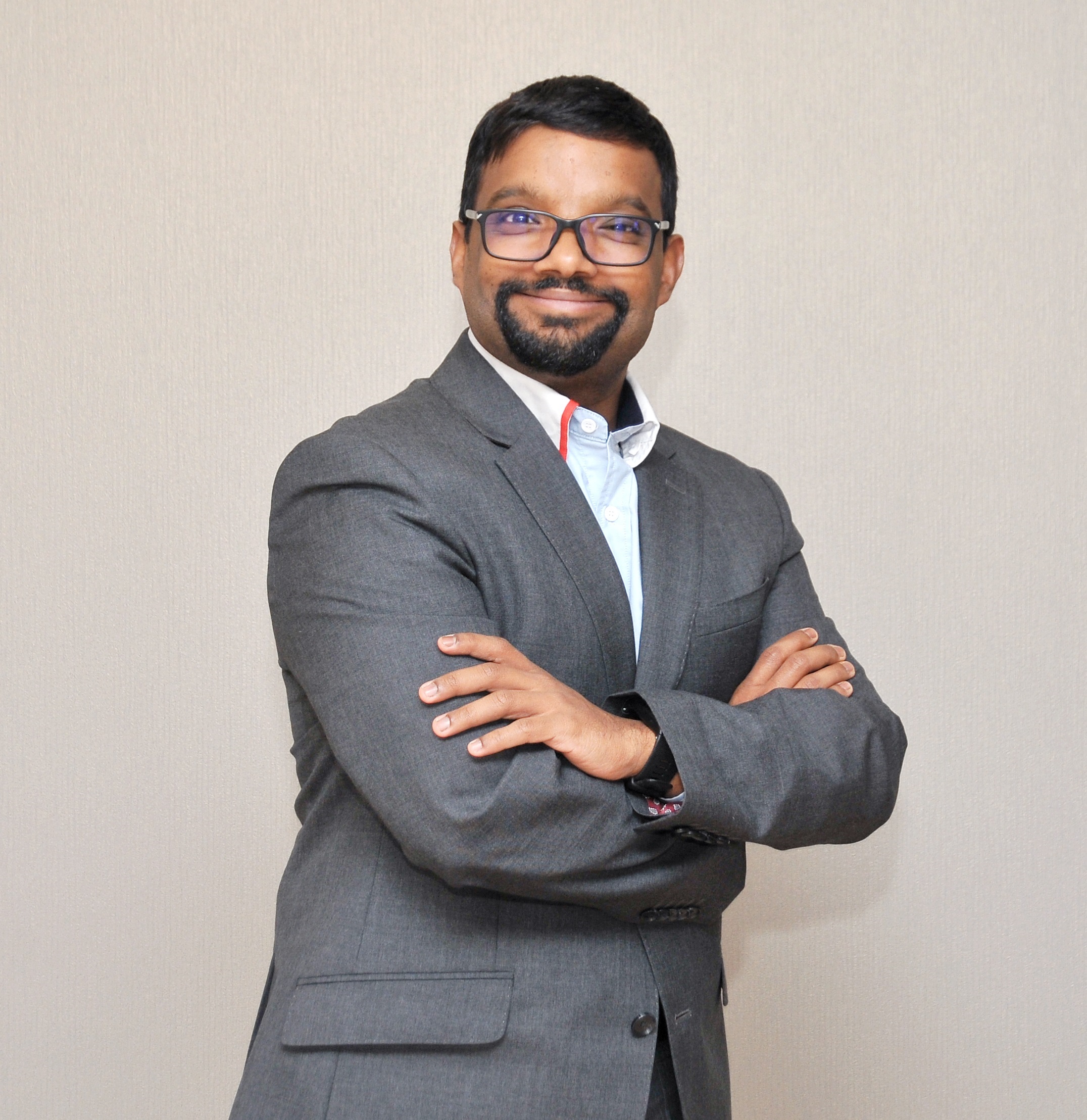As the world braces for the “new normal”, businesses are starting to see new challenges and opportunities of creating the future of work. From a sudden shift to remote working and moving all meetings online, the world is leveraging on the available technology to redefine the future of workplace.
The Nagaoka Review team had the opportunity to interview Rohit Nambiar, CEO of AXA AFFIN Life Insurance on his thoughts on the challenges faced during the COVID-19 pandemic, the future of insurance industry and how the future workforce could complement the need for digitalization in the “new normal” era.
NR: Thank you Rohit, for taking time to speak with us about this important topic today. What do you think the post-COVID-19’s “new normal” look like in a corporate environment and how AXA-AFFIN Life Insurance is managing with the change?
RN: It is my pleasure to share my humble experience. Thank you for asking this question. Thankfully for us, agility has always been in AXA AFFIN’s DNA. Back in 2018, we were the 1st insurer in Malaysia to adapt an enterprise-wide agile approach and HR policies at the workplace (i.e. staggered working hours, work-from-home concept, casual dress code all week, hot desking, soft phones, four months maternity leave, one month paternity leave, etc.). Hence, from that perspective, we were less hassled when we had to work-from-home initially. But, obviously weren’t prepared for such a prolonged period.
When we say a new normal, it means Company will need to think out of the box, and re-look at the whole employee journey. Most important is to have agile mindset, think of ways to have frequent communication, stay connected with teams, different ways of engagement initiatives, continue to look at people development & etc.
In AXA, we provide all employees the relevant tools to accelerate their adaptation on working from home and this includes a continuous learning culture via online learning (LinkedIn Learning), technology & tools (laptop, softphones, MS Teams, Workplace, etc.).

”"I believe that COVID has forced us all to develop new muscles to be more digitally incline and practice agile."
Rohit NambiarCEO, AXA AFFIN Life Insurance
People have been more patient in learning new technologies and more open-minded in embracing digital as compared to before. From softphones to new business submission and Agency/customer portals, the same people who complained about technology are using it more than ever before and we hear lesser complaints than ever before as well. Also, more work emails and phone calls have become instant messages or video.
As communication is seen as the key especially in this new workplace landscape, we are always finding new ways to interact and engage with our employees remotely.
Personally, I have run a weekly live stream to all staff to update them on the week that passed by. I also do a daily video catch up with my direct reports to see people, talk to them and make them feel a part. I have also prepared short shout-out videos on achievements to be shared via Whatsapp group as it helps to connect more closely with employees. Finally, I have met every single staff in the company, in groups of 10-15 to ensure they have a space and place to communicate and express themselves.

NR: How has the insurance industry’s landscape changed over the past 5 years? What accelerated the change?
RN: I believe with every crisis, there is an opportunity. For the insurance industry, this crisis is fast becoming the single biggest catalyst of digital adoption we’ve seen in our lifetime. This pandemic has given us an immense opportunity to fast forward the transformation of our traditional channels (Agency and Bancassurance) to be more open-minded and embrace digital to create a win-win situation.
There is no doubt that this crisis has driven insurers to increase the digitization on their operations and interactions with clients. Technology is no longer an option, but is now an essential tool for businesses. Finding the new normal for our businesses will be very critical.
Insurance will experience rapid digitalization and see more investment happening at the digital tools or digital enabler. We are convinced that digital transformation is the way forward and the future of insurance. We have to keep innovating and keep pushing the boundaries.
Along with it, we may see more acquisition into digital enabled insurers or Fintech by traditionally agency driven insurers to fast track their involvement in digital transformation. Higher efficiency & competency will be achieved as greater emphasize will be put on the automation of processes and at the same time, insurers will be more agile, resilience, responsive and connected.
This is the opportunity for us to make it happen and not to let this stop us from moving forward. I doubt any industry will go through the pace of change that insurance will over the next 5 years. It’s time to be bold, innovative & disruptive! And that’s precisely what keeps me so excited about working in this industry.
NR: How can highly regulated industries such as the insurance industry embrace such changes?
RN: Millennials will bring in a whole new dimension to insurance. Many researches have proved that mobile phones are the number one prized material possession of a millennial / zillennial. This clearly will force insurers to “think mobile first”.
This means our traditional way of adding one feature on top of another and on and on in response to other competitors will have to come to an end. These complex products cannot be delivered through a mobile and the complexity that this industry thrived on will be fundamentally challenged at its roots. Consumers will buy what they really want, how they want it and not buy what someone sells to them because they feel this is what someone wants.
For the same reason, I believe there will be a clearer division of lines across different channels with some cross-linkages:
(A) COMMODITIZATION
Commoditization of lower involvement products – Travel, Motor, Home Simple health, protection and so on will move from traditional channels to pure direct or integrated direct channels digitally.
(B) AGENCY 2.0 - A MORE PROFESSIONAL SALES NETWORK
Supported by digital, Robotic Process Automation, Big Data, Robo Advisors, VR and AI for complex products (Health, CI, Life, etc.).
Agents will be more productive than before as there will be fewer of them selling much more than before thanks to technology and the learnings they had during this COVID for example. They realize they can sell or almost sell to most customers through a video chat or a call and very little requires direct physical meetings.
Advice, trust and relationship are central to this model of business and age old philosophies of requiring physical meetings to evidence these are being challenged by technology and the lack of time and greater social awareness amongst people post-COVID. Hence, I do believe that Agents who are ready to change will thrive in a new world and this may also mean that may even sell a bit of lower involvement products through their digital channels/interfaces.
This will help them build up their customer lifetime value and hence, their profitability. For too long, companies haven’t engaged Agents on this side of the world and hence, digital has been limited to digitization of processes. Beyond which it was considered a threat and not complimentary in nature as detailed above.
(C) POWER OF PARTNERSHIPS
Integrating them to our value chain (CX, claims, anticipation, etc.)
While insurance will not be like FMCG with a clear market that they will operate in, insurance will cover a wide array of needs – ranging from sophisticated legacy planning for high networth individuals to bite-size products sold as an add along with a primary product. They could be telco who want to sell protection with a connection because they know their customers very well or an e-hailing platform selling bite size covers for their drivers and customers on an on-demand basis.
Thanks to all these partnerships and new age technologies, some part of insurance may move from being charged upfront to being paid at fixed intervals based on usage (similar to any utility bill). E.g. Telematics data for car premium, wearable data for health premium, GPS data for travel premiums, etc.
Insurers will move away from doing everything on their own. This is one of the reasons why many insurers are large, complex and heavy. At the centre of what we do at AXA is specializing and being really good at what we do and partnering with those who are good in other areas. “Beyond Insurance” is a central theme for AXA.
Our vision is to be the preferred health and protection insurer for millennials in Malaysia. In this direction, we have already launched many initiatives for our customers, going beyond the typical health journey.
- Free tele-consultation and drug delivery with DoctoronCall – Launched in July 2019
- COVID testing at a cost and rewards platform with BookDoc – Rewards platform and discount programme since early 2018
- Rehabilitative care, mental well-being and psychology support with Naluri since early 2018
- Above all, we are fully digital and #1 digital life/health insurer – This means customers can buy, service and claim with us easily online. We have an eMedical card, customer portal, Whatsapp (Ask Michelle) and chatbot (ATOM) for servicing as well since 2018.
This has never been more important than today when customers are worried about their health and also other elements around potential global slowdown. So we are going beyond just making it easier to buy or claim with us.
NR: How would business and consumerism change?
RN: The impact of post-COVID is being felt by everyone irrespective of their financial and social status. The day-to-day lives of people all over the world has changed in ways considered unthinkable due to the pandemic.
In the midst of the pandemic in Malaysia, consumers have many worries to bear – fearing for the health of their families, whether they can buy for their basic needs, and the loss of freedom to move about.
These common concerns are manifesting themselves in different ways as consumers adapt their old behaviours – and adopt new ones. It’s clear that the MCO have had an impact on what people buy and how they buy it, but also how much the buy when they go shopping.
Stocking up on food and essential items more than before is a common response to the crisis. With the uncertain times we are in, people prefer to spend their money on essentials items rather than more luxury items.
Following the outbreak of COVID-19, there’s a sudden wake-up call and awareness among people on the importance of medical insurance in dire times of need and life protection for their family legacy.
We see a positive trend in our digital channels amidst the slowdown in traditional channels. To date, we noticed an increase in our sales online by +70%.
Consumer will become much more budget conscious and will be prudent in their spending. Comparison will be much more intense as consumer will be shifting to value seeking options during difficult time.
With limitations to physical branch visits, a lot of our customers are opting for self-serving options via our Customer Portal. We also noticed 61% increase in volumes on our customer portal even since the Movement Control Order was announced.
”But despite the pain, difficulties and financial constraints many Malaysians are facing, this could be a small window of opportunity to bring positive changes to the lifestyle and behaviour of consumers.
Note
NR – The Nagaoka Review
RN – Rohit Nambiar
CX – Customer Experience
MCO – Movement Control Order (Malaysian version of ‘lockdown measure’ to manage the COVID-19 situation)
Update: Mr. Rohit Nambiar was the CEO of AXA-AFFIN Life Insurance at the time of the interview. He has since moved on to a new role as the Group Chief Executive Officer of Tune Protect since October 2020.













